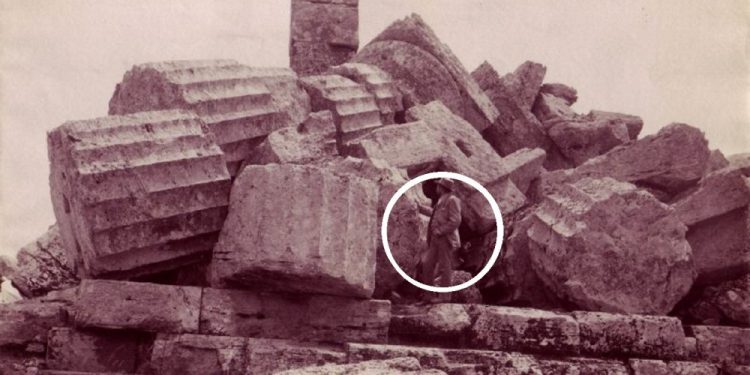The Secrets of Stone
Imagine standing in the shadow of an immense stone structure built thousands of years ago by an ancient civilization. The sheer scale and complexity of these megalithic monuments continue to captivate the minds of historians, archaeologists, and curious travelers alike. From the iconic Stonehenge to the colossal Moai statues of Easter Island, the mysteries surrounding the origins, construction techniques, and purposes of these enigmatic structures remain largely unsolved. In this article, we explore the fascinating world of megaliths and delve into the theories that attempt to unravel their secrets.
Stonehenge – A Prehistoric Puzzle
Located in the English countryside, Stonehenge is a remarkable example of Neolithic engineering. This circular arrangement of massive stones, some weighing up to 25 tons, has baffled experts for centuries. Theories surrounding its purpose range from a celestial observatory to a sacred burial ground.
Construction Techniques
The precise construction methods used to erect Stonehenge remain a topic of debate among experts. Some suggest that the builders employed simple tools like ropes, levers, and wooden rollers, while others argue that advanced engineering techniques may have been used, such as counterweights and cranes.
The Pyramids of Giza – The Lasting Legacy of Ancient Egypt
The Pyramids of Giza, the last remaining wonder of the ancient world, are an enduring testament to the architectural prowess and ingenuity of the ancient Egyptians. Constructed around 2580-2560 BCE, these monumental structures have stood the test of time, captivating the hearts and minds of countless generations. Although most mainstream experts believe the pyramids were built as tombs for the pharaohs, these remarkable edifices have served as a source of inspiration, fascination, and endless speculation for millennia.
The three largest pyramids in Giza, the Great Pyramid of Khufu, the Pyramid of Khafre, and the Pyramid of Menkaure, are each dedicated to a specific pharaoh. The Great Pyramid of Khufu, also known as the Pyramid of Cheops, is the largest and most famous of the three. It was originally 146.6 meters (481 feet) tall and is currently 138.8 meters (455 feet) due to the erosion of its outer casing stones. This awe-inspiring structure consists of over 2.3 million blocks of stone, each weighing between 2.5 and 15 tons, and is estimated to have taken approximately 20 years to construct.
Construction Techniques
How the ancient Egyptians managed to construct the pyramids without modern machinery is still a subject of intense speculation. Some theories suggest that they used ramps and sledges to transport the massive stone blocks, while others propose more complex methods, such as water transportation and intricate pulley systems.
Easter Island’s Moai Statues – A Remote Riddle
Scattered across the isolated landscape of Easter Island, the enigmatic Moai statues stand as silent witnesses to a lost civilization. These monolithic stone figures, some as tall as 33 feet, have puzzled researchers for decades.
Construction Techniques
The exact methods employed to carve, transport, and erect the Moai statues are still shrouded in mystery. Theories range from the use of wooden sleds and levers to the intriguing idea that the statues were “walked” into place using ropes and a rocking motion.
Ollantaytambo and Sacsayhuaman – The Engineering Marvels of the Inca
Nestled high in the Andes, the ancient Inca sites of Ollantaytambo and Sacsayhuaman showcase remarkable megalithic construction techniques. With massive stones weighing up to 200 tons, these sites demonstrate the extraordinary skill of the Inca masons.
Construction Techniques
The methods used to shape and fit the colossal stones at these sites remain largely unknown. Researchers believe that the Inca used a combination of pounding, grinding, and chiseling to create the perfectly fitted blocks, but the exact process remains elusive.
Baalbek – The Colossal Stones of the Levant
The ancient site of Baalbek, located in modern-day Lebanon, is home to some of the most massive megalithic stones in the world. The Trilithon, a row of three colossal stones weighing approximately 800 tons each, is an engineering marvel that has fascinated researchers for generations.
Construction Techniques
The transportation and placement of the colossal stones at Baalbek remain a mystery. Some theories suggest that the builders used massive wooden rollers or sledges, while others argue that they employed complex lever and pulley systems to lift and move the stones into position. The ingenuity of the ancient builders in achieving such precise alignment and fitting of these gargantuan stones continues to baffle modern engineers.
Göbekli Tepe – The World’s Oldest Temple
Göbekli Tepe, a prehistoric site located in modern-day Turkey, has captured the attention of archaeologists and historians since its discovery in 1994. Dated to approximately 9600 BCE, this remarkable site predates Stonehenge by over 6,000 years, making it the world’s oldest known temple complex. The intricate carvings and massive T-shaped limestone pillars at Göbekli Tepe offer a tantalizing glimpse into the spiritual beliefs and practices of early human societies.
Construction Techniques
The construction of Göbekli Tepe is remarkable considering its age and the fact that it was built during the Pre-Pottery Neolithic period, a time when humans had not yet developed metal tools or pottery. The site comprises multiple circular enclosures, each containing several large T-shaped pillars, some of which reach heights of up to 5.5 meters (18 feet) and weigh up to 20 tons. The pillars are adorned with intricate carvings of animals, abstract symbols, and human-like figures, which are believed to represent mythological beings or ancestral spirits. How the ancients managed to transport such stones is a profound mystery.
Unlocking the Secrets of the Past
The mysteries surrounding the world’s most enigmatic megalithic monuments continue to captivate the imagination of researchers and enthusiasts alike. As we strive to unlock the secrets of the past, these ancient structures serve as a testament to the ingenuity and skill of our ancestors. They remind us that the human spirit, fueled by curiosity and determination, can overcome the most formidable challenges. While we may never fully understand the methods used to construct these awe-inspiring monuments, our ongoing efforts to decipher their origins and construction techniques shed light on our planet’s rich and diverse cultural history.
PLEASE READ: Have something to add? Visit Curiosmos on Facebook. Join the discussion in our mobile Telegram group. Also, follow us on Google News. Interesting in history, mysteries, and more? Visit Ancient Library’s Telegram group and become part of an exclusive group.











